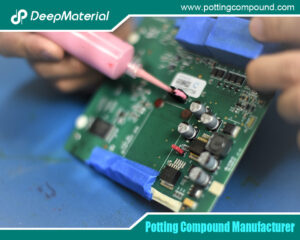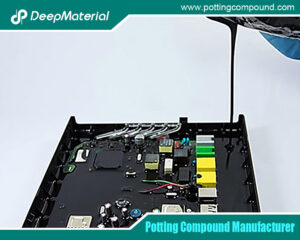
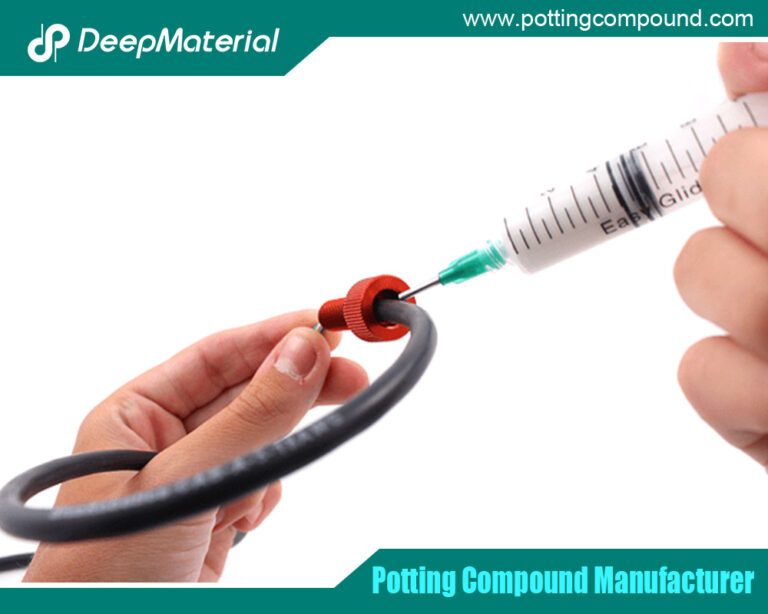
The Essentials of Electronics Encapsulation Epoxy: Protecting Your Components
- Electronic Potting Material Manufacturer
- October 9, 2024
- Acrylic Conformal Coating, acrylic vs silicone conformal coating, circuit board potting compound, conformal coating, conformal coating electronics, conformal coating for pcb, conformal coating material, conformal coating pcb, conformal coating silicone, Connector Potting Compound, deepmaterial potting compound, Electronic Epoxy Encapsulant Potting Compound, Electronic Epoxy Potting Compound, electronic potting compound, Electronic Potting Compounds Manufacturer, electronics encapsulation, electronics encapsulation epoxy, electronics encapsulation epoxy adhesive, electronics encapsulation epoxy adhesive glue, electronics epoxy, Encapsulant Potting Compound, Encapsulants and Potting Compounds Suppliers, encapsulation epoxy, encapsulation epoxy adhesive, Epoxy Encapsulant Potting Compound, epoxy potting compound, epoxy potting compound manufacturer, led encapsulation epoxy, ossila encapsulation epoxy, pcb encapsulation epoxy, pcb encapsulation epoxy adhesive glue, uv encapsulation epoxy
The Essentials of Electronics Encapsulation Epoxy: Protecting Your Components
Electronics encapsulation epoxy is crucial in ensuring the longevity and reliability of electronic components. Electronic devices become more intricate and delicate as technology advances, making robust protection essential. Encapsulation involves encasing sensitive parts in a protective layer to guard against various environmental and mechanical stresses. This article delves into the critical aspects of electronics encapsulation epoxy, highlighting its benefits, applications, and the science behind its effectiveness.
Critical Characteristics of Encapsulation Epoxy
Electronics encapsulation epoxy is a critical component in the protection and longevity of electronic devices. This specialized epoxy safeguards delicate electronic components from various environmental hazards. It achieves this through several key characteristics:
- Adhesion: The epoxy forms a robust bond with a wide range of materials, ensuring it adheres securely to the surfaces it covers. This strong adhesion helps in maintaining the integrity of the electronic assembly.
- Insulation: One of the primary functions of encapsulation epoxy is to provide electrical insulation. It prevents short circuits and mitigates other electrical issues that could arise from unintended electrical contact.
- Durability: Encapsulation epoxy is built to withstand environmental stresses. It maintains its protective qualities even when exposed to temperature fluctuations and mechanical vibrations, ensuring the electronic components remain safe and functional over time.
- Chemical Resistance: The epoxy offers excellent protection against corrosive substances and chemicals. This characteristic is essential in environments where electronic devices might be exposed to harsh chemicals or corrosive agents, helping preserve the components’ longevity.
The Encapsulation Process: A Step-by-Step Overview
Understanding how encapsulation epoxy is applied and how it works helps us appreciate its importance. Here’s a detailed look at the encapsulation process:
1. Preparation of the Component
- Cleaning: Remove any dirt, oil, or residues from the component’s surface to ensure proper adhesion.
- Inspection: Check for any defects or damages that need addressing before applying the epoxy.
2. Mixing the Epoxy
- Component Ratio: Mix the epoxy resin and hardener in the specified ratio. It ensures the epoxy cures correctly.
- Stirring: Thoroughly mix the components to achieve a uniform consistency, which is critical for optimal performance.
3. Application of Epoxy
- Method: Apply the mixed epoxy using various techniques such as brushing, spraying, or dipping.
- Coverage: Ensure complete coverage of the component to form a consistent protective layer.
4. Curing
- Temperature and Time: Allow the epoxy to cure under controlled temperature and time conditions to achieve the desired hardness and durability.
- Post-Curing: Additional curing steps may sometimes be required to enhance the epoxy’s properties.
Benefits of Electronics Encapsulation Epoxy
Electronics encapsulation epoxy is an essential material in the electronics industry. It offers a range of benefits that significantly enhance the performance and longevity of electronic components. This specialized epoxy serves multiple critical functions, all of which contribute to electronic devices’ overall reliability and efficiency.
Critical Benefits of Electronics Encapsulation Epoxy:
Enhanced Durability:
- Shock Absorption: The epoxy layer acts as a cushion, absorbing and dispersing shocks and vibrations that could otherwise cause damage to sensitive electronic parts. This feature is crucial for maintaining the integrity of electronic components in various operating conditions.
- Long-Term Protection: The epoxy extends the components’ operational life by encapsulating them, protecting them from everyday wear and tear that could lead to premature failure.
Environmental Protection:
- Moisture Resistance: One of the most significant advantages of encapsulation epoxy is its ability to shield electronic components from moisture. This resistance prevents humidity and water exposure issues, such as corrosion and electrical malfunctions, which can be detrimental to the device’s functionality.
- Chemical Resistance:Encapsulation epoxy also offers robust protection against harsh chemicals that might otherwise deteriorate the electronic components. This chemical resistance ensures that the components remain functional even in challenging environments.
Improved Electrical Performance:
- Insulation: The epoxy provides excellent electrical insulation, which is vital for preventing short circuits and improving the device’s overall electrical performance. Effective insulation also helps maintain the electronic system’s stability and reliability.
- Thermal Management: Certain types of encapsulation epoxy are designed to assist with thermal management. They help dissipate heat generated during operation, keeping the components within safe temperature ranges and enhancing their performance and lifespan.
Applications of Electronics Encapsulation Epoxy
Encapsulation epoxy is used across various industries and applications to protect electronic components. Here are some notable areas where encapsulation plays a vital role:
Consumer Electronics
- Smartphones and Tablets: Protects delicate circuits from moisture and physical damage.
- Wearable Devices: Ensures the longevity of components exposed to sweat and movement.
Automotive Industry
- Control Modules: Safeguards electronic control units (ECUs) from extreme temperatures and vibrations.
- Sensors: Protects sensors used in various vehicle systems from environmental stressors.
Aerospace and Defense
- Avionics:Encapsulation ensures the reliability of avionics systems exposed to harsh conditions.
- Military Equipment: Protects sensitive electronics from environmental and mechanical impacts.
Industrial Electronics
- Automation Systems: Ensures the durability of manufacturing and industrial automation components.
- Heavy Machinery: Shields electronics in heavy machinery from dust, moisture, and mechanical stress.
Innovations in Encapsulation Epoxy
Innovations in encapsulation epoxy are driving remarkable advancements in the rapidly evolving field of electronics encapsulation. Modern encapsulation epoxy technology is continually refined to improve performance, durability, and environmental impact. Key developments include high-temperature epoxies, self-healing epoxies, and eco-friendly formulations.
High-Temperature Epoxies:
- Thermal Stability: Engineered to endure extreme temperatures, high-temperature epoxies are ideal for demanding applications where temperature stability is crucial. These materials maintain their integrity and performance even under severe thermal stress.
- Enhanced Durability: These epoxies offer exceptional protection against significant thermal fluctuations, extending the lifespan of electronic components and ensuring reliable operation in challenging environments.
Self-Healing Epoxies:
- Damage Repair: A groundbreaking feature of self-healing epoxies is their ability to repair minor damages automatically. This capability helps maintain the functionality of encapsulated electronics and prolongs their operational life.
- Longevity: These epoxies not only address immediate wear and tear but also enhance the overall durability of electronic components, making them more resilient to ongoing stress and damage.
Eco-Friendly Formulations:
- Sustainable Materials: The push towards eco-friendly formulations emphasizes using sustainable materials that reduce the environmental footprint of encapsulation products. These materials are designed to be less harmful to ecosystems and human health.
- Recyclability: Innovations in encapsulation epoxy are increasingly focusing on improving recyclability. By developing materials that are easier to recycle, the industry aims to minimize waste and support environmental sustainability.
Conclusion
Electronics encapsulation epoxy is an indispensable component in modern electronics manufacturing and maintenance. By protecting against environmental and mechanical stresses, encapsulation epoxy ensures the reliability and longevity of electronic components. As technology advances, so does the need for enhanced protection, making innovations in encapsulation epoxy crucial for future developments.
Understanding and utilizing electronics encapsulation epoxy extends the lifespan of devices and ensures their optimal performance in various applications. As the demand for more durable and reliable electronic devices grows, encapsulation epoxy will play a pivotal role in safeguarding tomorrow’s technology.
For more about choosing the essentials of electronics encapsulation epoxy: protecting your components, you can pay a visit to DeepMaterial at https://www.pottingcompound.com/ for more info.
Recent Posts
- The Development Trend and Future Prospects of Electrical Potting Compound in the Glue Industry
- The Conformal Coating for PCB Market Has Entered an Explosive Period: Key Drivers and Reports Detailed
- How Does Epoxy Encapsulated LED Work?
- Which Glues Are Suitable for Encapsulation of Electronic Products?
- What Are the Design Standards for the Glass Transition Temperature (Tg) and Tensile Modulus of Automotive Electronic Encapsulants Adhesives?
- Usage Methods of LED Potting Compounds: From Mixing to Curing – A Complete Step-by-Step Guide
- The Characteristics of Thermal Conductivity, Waterproofness and Shock Resistance of LED Potting Compounds
- Revealing the Wide Range of Application Scenarios of LED Potting Compounds
- In-Depth Analysis of Several Common LED Potting Glue Types
- A New Benchmark for Electronic Protection: Conformal Coating Process from Manual to Fully Automatic
Tags
Related Posts

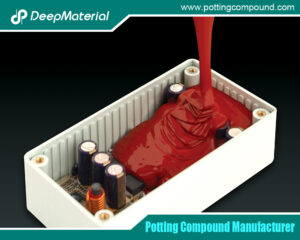
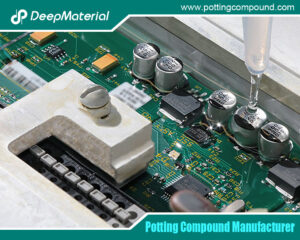
How Does Epoxy Encapsulated LED Work?
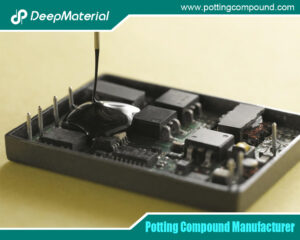
Which Glues Are Suitable for Encapsulation of Electronic Products?

